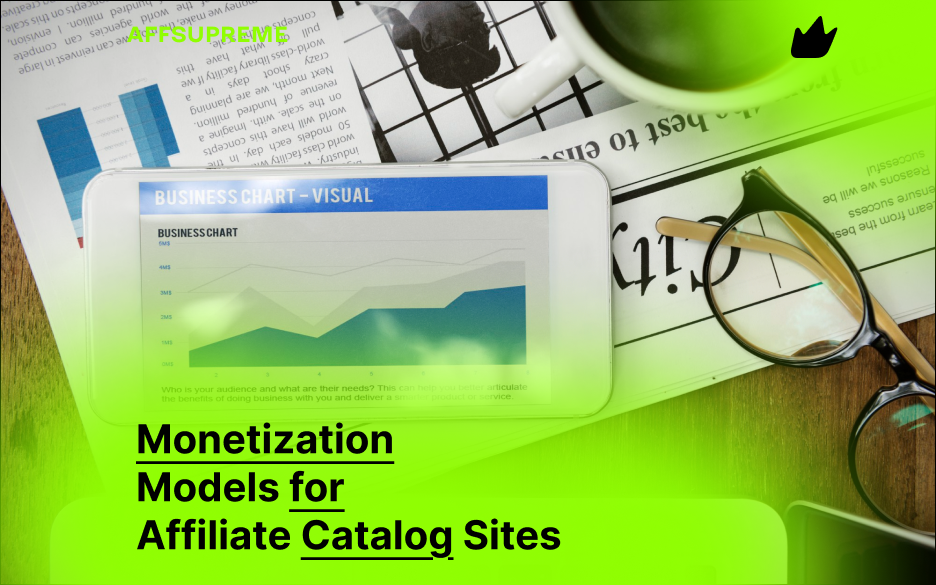Affiliate catalog sites have become a cornerstone of modern digital marketing. With the right monetization model, these sites can generate sustainable income while delivering value to users. Whether you’re building a niche product directory or a large-scale comparison engine, choosing the right monetization strategy is critical to your success.
In this article, we’ll explore the top monetization models for affiliate catalog websites, highlighting their pros, cons, and best practices.
What Is an Affiliate Catalog Site?
An affiliate catalog site is a web platform that aggregates product listings from various retailers and directs users to these merchants through affiliate links. When a user makes a purchase after clicking through, the site earns a commission.
These sites often include:
-
Product listings with prices and images
-
Filters and search functionality
-
Comparisons, reviews, and ratings
-
Calls-to-action like “Buy Now” or “View Deal”
To generate income, affiliate catalog sites must use well-structured monetization models that align with their audience and traffic.
Top Monetization Models for Affiliate Catalog Sites
1. Pay-Per-Sale (PPS) Affiliate Model
Overview: Earn a commission each time a user makes a purchase through your referral link.
Best for: High-conversion niches like electronics, fashion, home goods, or travel.
Pros:
-
High earning potential per transaction
-
Widely supported by affiliate programs like Amazon Associates, ShareASale, CJ, etc.
Cons:
-
Revenue depends on user purchase behavior
-
Commission rates vary and can be low in some categories
Tip: Optimize product pages with strong CTAs and updated pricing to boost conversions.
2. Pay-Per-Click (PPC) or Pay-Per-Redirect
Overview: Get paid every time a user clicks a product link, regardless of whether they buy.
Best for: High-traffic sites where users are likely to click frequently.
Pros:
-
Lower barrier to earning
-
Ideal for content-rich sites with lots of outbound links
Cons:
-
Lower earnings per click compared to PPS
-
Risk of click fraud or low-quality traffic penalties
Example networks: Skimlinks, Sovrn, or direct merchant deals.
3. Sponsored Listings or Featured Products
Overview: Charge merchants to feature their products or listings in prominent positions.
Best for: Sites with strong domain authority and trusted product comparison features.
Pros:
-
Predictable revenue model
-
Monetize brand partnerships directly
Cons:
-
Requires high traffic and influence to attract sponsors
-
Risk of reducing trust if not clearly marked as “Sponsored”
Tip: Always disclose sponsored placements to maintain user trust and comply with advertising guidelines.
4. Subscription-Based Access or Premium Features
Overview: Offer exclusive features or content (e.g., in-depth comparisons, alerts, analytics) for a monthly or yearly fee.
Best for: B2B catalog sites or platforms targeting professionals and enthusiasts.
Pros:
-
Recurring revenue stream
-
Builds a loyal user base
Cons:
-
Harder to scale unless offering unique value
-
Requires strong UX and perceived benefit
5. Display Advertising (AdSense, Programmatic Ads)
Overview: Use banner ads or contextual ads to monetize page views.
Best for: Broad-topic affiliate sites with large amounts of traffic.
Pros:
-
Easy to implement
-
Generates passive income from non-converting traffic
Cons:
-
Can clutter the UI/UX
-
Lower RPM (Revenue per Mille) unless highly optimized
Tip: Combine AdSense with affiliate links for dual monetization without overwhelming the user.
Choosing the Right Monetization Mix
Successful affiliate catalog websites often combine several monetization models to maximize revenue. For example:
-
A niche product directory might rely primarily on pay-per-sale commissions and sponsored listings.
-
A broad comparison site may benefit from a mix of PPS, PPC, and display advertising.
-
A B2B-focused platform can generate steady income from premium subscriptions and strategic sponsorships.
-
A content-heavy blog could use affiliate links alongside contextual ads to diversify earnings.
When selecting your model, consider your traffic volume, user intent, niche profitability, and available technical resources for implementation and tracking.
SEO Best Practices for Monetized Catalog Sites
To ensure long-term success, your monetization must be supported by strong SEO practices, including:
-
Optimizing product pages with unique descriptions
-
Using structured data (schema markup) for products and reviews
-
Ensuring mobile performance and page speed
-
Targeting long-tail keywords with high buyer intent
-
Building backlinks to high-value category or comparison pages
Final Thoughts
Affiliate catalog sites can be highly profitable if they combine the right monetization models with strong SEO and user experience. Whether you focus on pay-per-sale commissions, sponsored content, or subscriptions, the key is delivering value and guiding users toward a purchase decision.
By experimenting with different revenue streams, testing performance, and continuously improving your site, you can build a sustainable affiliate business in almost any vertical.


